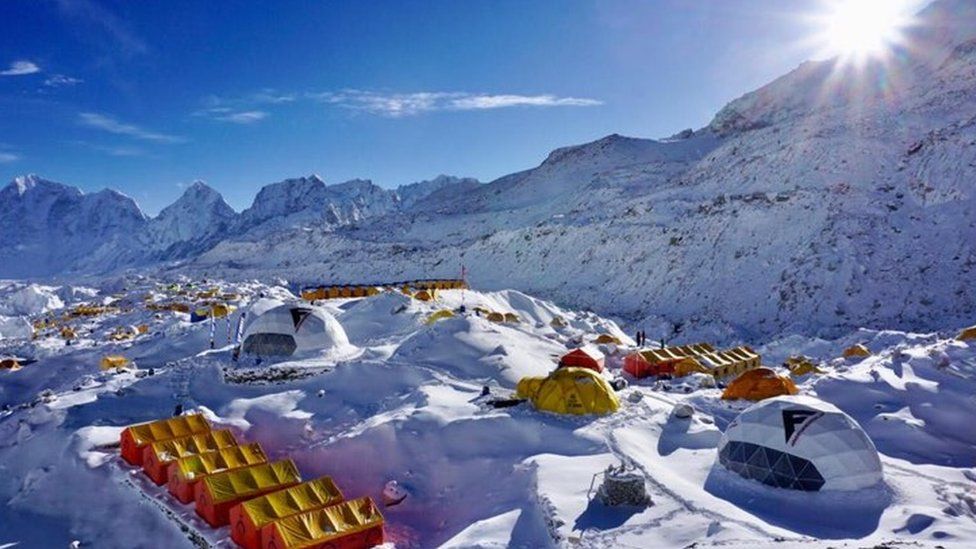Table of Contents
INTRODUCTION:
The Sagarmatha National Park is a UNESCO World Heritage Site that encompasses 1,148 km of land in the Himalayas of eastern Nepal. The word, Sagarmatha, is the Nepali word which is used for Mount Everest or Mount Sagarmatha and is derived from the two beautiful Nepali words of Sagar, meaning ‘Sky’ and Matha meaning ‘Head’. The peak and its surroundings were given the Western name of Everest.
The Sagarmatha National Park is considered as the highest national park in the world with its lowest point standing at over more than 2,800 m and its highest, the peak of Everest, at over upto 8,800 m. The park contains a very unique combination of green forests, barren land and snow-capped peaks which is the home to approximately 6,000 indigenous Sherpas and several species and varieties of animals in the region.
Since the park was established in the late 1970s and inscribed as a world heritage site since 1979, the number of tourists visiting the region annually has increased over a period of time. From almost 3,500 in 1979 to over 30,000 annual visitors, the park and its inhabitants have become increasingly popular for tourism as a source of income.
Landscape
With an altitude range of over more than 6,000 m, the Sagarmatha National Park landscape varies drastically with a sudden change from lush forests in the lower, southern regions to the barren lands that make up most of the valleys and ultimately to the ice and snow of the all uppermost parts.
Flora and Fauna
The lower and the middle most zones of the park are characterised by the scented forests of pine, juniper and fir. As you move towards the north side and gain altitude, the forests stop and the wide range of vegetation thins out considerably except for some of the rhododendron covered hillsides in early spring.
Culture
The Tibetan Buddhist Sherpas have inhabited the region including the Sagarmatha National Park for the last four centuries. Their unique and mesmerizing culture has survived to this day and they continue to be the proponents of conservation of the park through their history, beliefs and through their ancient spiritual ties with the land on which they live. The bloodshed of animals in the park is prohibited, so foods are largely grain and vegetable based.
The Sherpa culture is very clearly visible through the various monasteries dotted across the region as well as from the main walls, where rocks are carved with prayer inscriptions) and prayer flags have become synonymous with Everest and the Himalayas.
Tourism and the Future of the Park
By and large, the rapid increase in the number of tourists visiting the park each and every year has had immensely beneficial impacts on the local people and the massive infrastructure in the region. Beginning with the building of the Lukla Airport and numerous schools after the summit of Sir Edmund Hillary and Tenzing Norgay, the influx of tourists has brought with them a slow flow of money and investment into this region.
Almost all the park is covered with the facility of 3G mobile connection and Wi-Fi is pretty common in the tea houses and restaurants, even at the highest point. Many tour guides and operators, both western and local, now run their own businesses in the region and the Everest Base Camp Trek has become one of the most famous and popular in the world with over 30,000 visitors every year.
Safety and cleanliness on the treks in the region has improved to the point where only a less number of people die each year, mainly due to altitude related sickness, underlying problems or other medical conditions. The summit climb is still considered tough but has gained a lot in terms of popularity to the point where it is common to see a bunch of people waiting to reach the summit. This is despite the large death ratio in recent years due to the two avalanches of 2014 and 2015 and of course the infamous year of 1996.
In recent years, the park has seen a lot of tourism taking its toll with an ever-increasing demand for new trails, hotels, energy, and more and more garbage being disposed of. The ecology of the park is delicate, so we ask all the visitors and tourists to be mindful and respect the long history of the park and its people.















